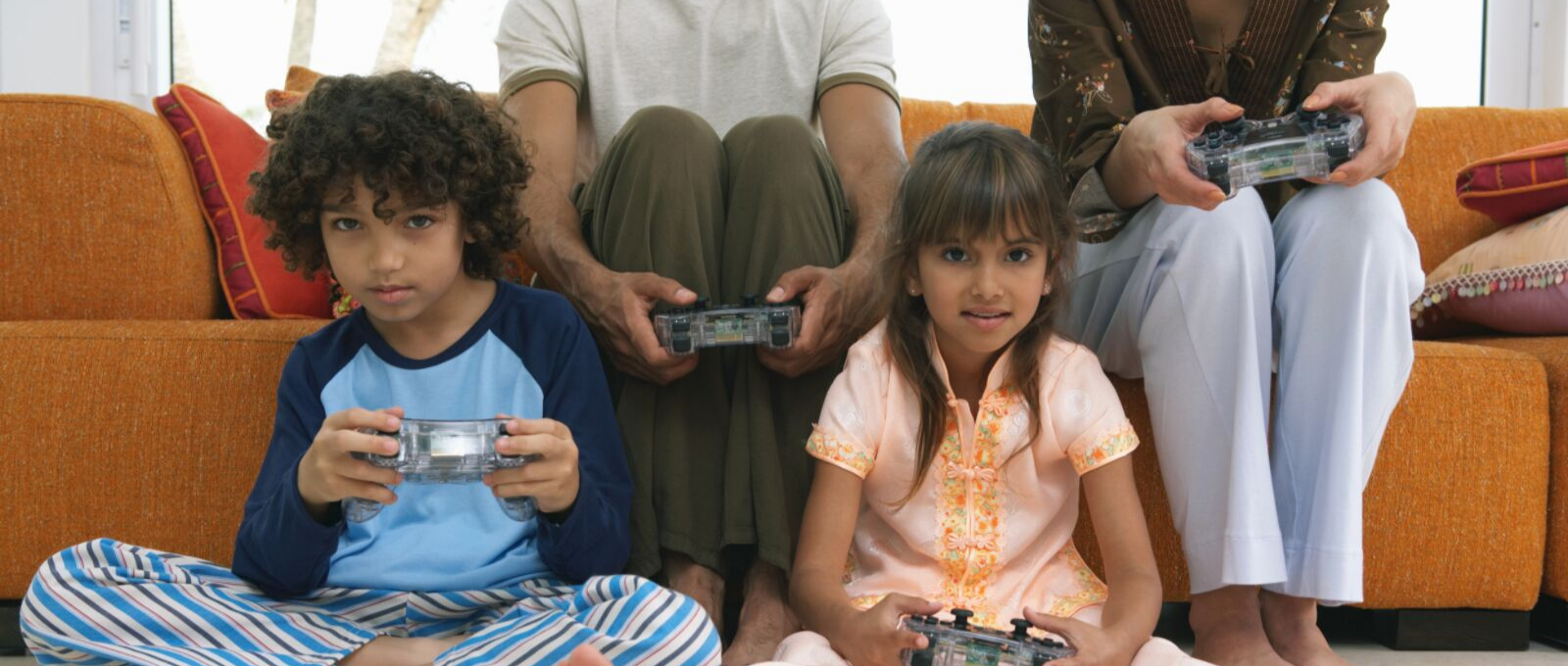As I write this post, incredible new apps are hitting the marketplace, software developers are creating new digital learning platforms, and families settle in to stream their favorite TV shows on demand.
There is no question that tech pros are very good at creating creative and innovative tools. The challenge is that the pace of innovation is faster than our collective understanding of how to take full advantage of their benefits. We have all kinds of questions about how all this technology impacts our kids’ lives, relationships, and learning.

We are good at creating tools. So how should we use them?
For the most part, thank goodness, the old debate about whether media and digital technologies are “good” or “bad” for kids is slowly losing steam. What’s gaining momentum is the understanding that technology is powerful. The good or bad depends upon how we and our kids use them.
The American Academy of Pediatrics (AAP) issued new recommendations to parents on October 28, 2013 regarding the amount of time kids should spend with TV, video games, cell phones, and the computer. The last time they weighed in on this was in 2001. So what is the 2013 prescription from America’s pediatricians? Here are the major takeaways:
- Discourage media use for children under two-years-old.
- No more than two hours of entertainment media a day.
- Set and enforce a tech curfew and encourage tech-free meals.
- Keep screens out of bedrooms.
- Co-view media with your children and talk about values and messages.
- Model active parenting by creating a “media and technology plan” as a family that includes clear expectations for use.
Seems reasonable enough, but following the AAP recommendations might be a difficult task for many families. We know, for example, that on average 8-18 year olds in this country spend nearly 8 hours a day with entertainment media and that 71% of them have TVs in their bedrooms. Babies are on board too. Almost one third of children under the age of two have screens in their bedrooms and one-quarter of three-year-olds go online daily.
So why suggest limits so far from the media reality of the average household in the U.S.? For starters, we are starting to better understand that all that time with technology is coming with a cost. The AAP cites compelling evidence that excessive use is linked with obesity, school and sleep problems, and aggression. Want more detail? Here is our take on these and some other issues:
Unlike previous policy statements however, the authors are quick to point out that there are tremendous benefits that come with positive technology habits. They cite increased access to information and prosocial learning among the potential positive outcomes. We agree that there are all kinds of things to love about digital media.
Not good or bad. Powerful.
We tend to look towards the advice of pediatricians when our kids are sick. We ask for prescriptions and insight when we notice symptoms that indicate something isn’t right.
This isn’t all that different except that media and technology should not be classified as a disease, a toxic substance, or a virus. They can be life-giving, inspiring, and meaningful.
That is why learning about the research is so helpful and paying attention to the symptoms is so important. Does screen time make your child anxious? Irritable? Distracted? Inspired? Creative? Engaged? Let’s treat accordingly.
I applaud the AAP recommendations – not necessarily as protection against disease but as a roadmap towards good health.